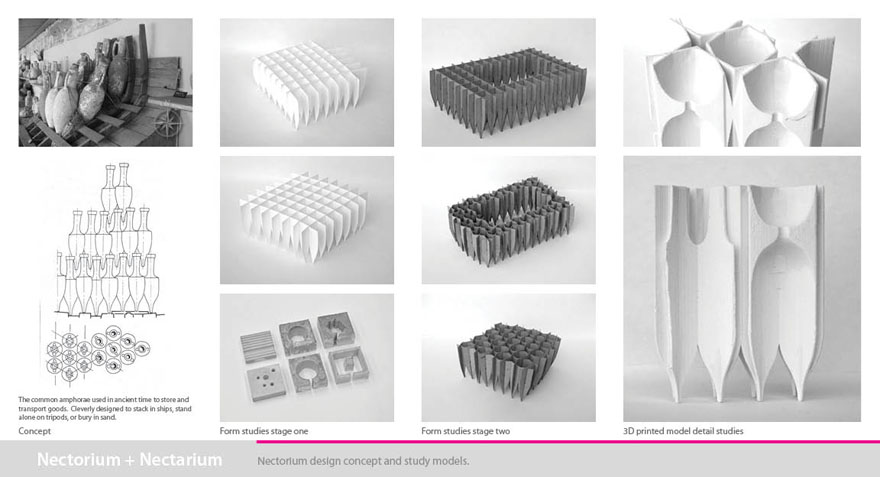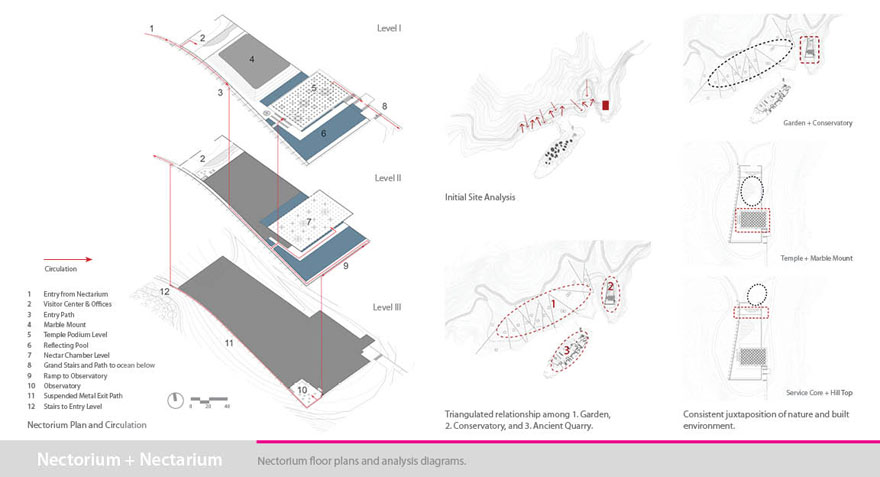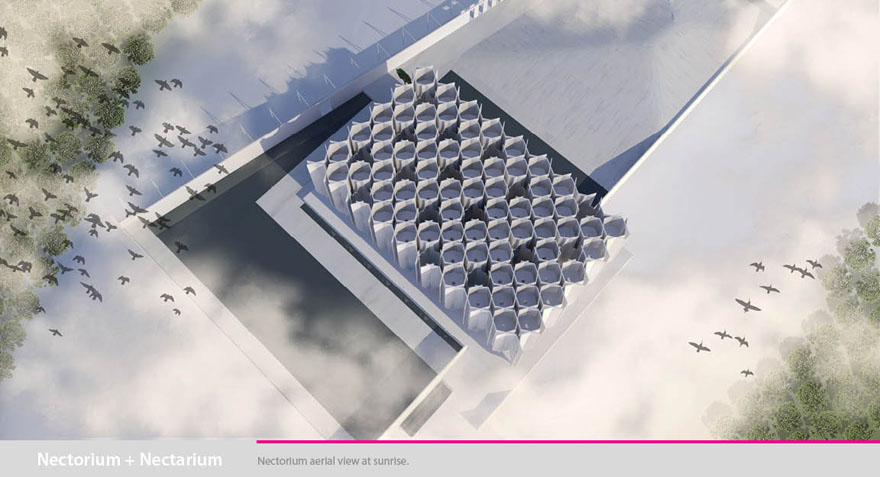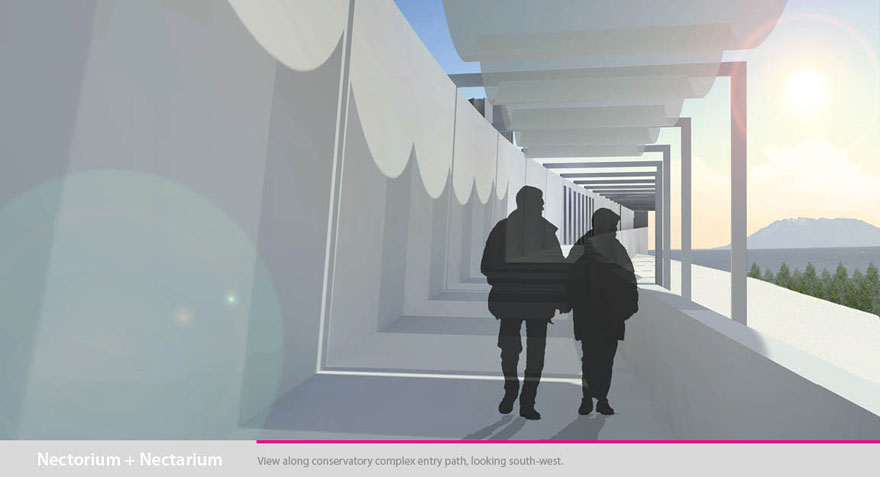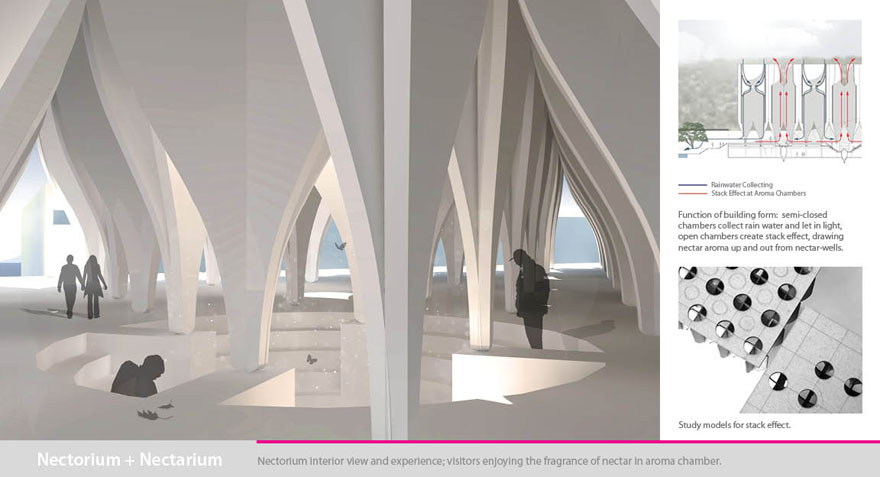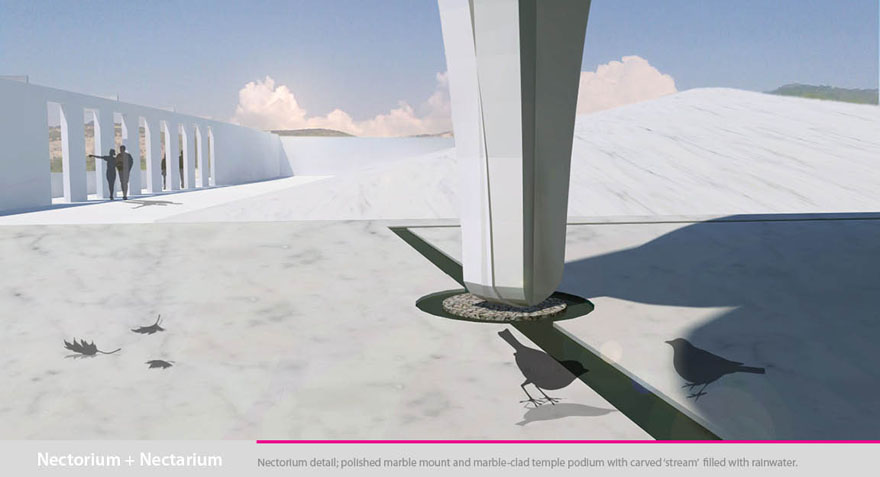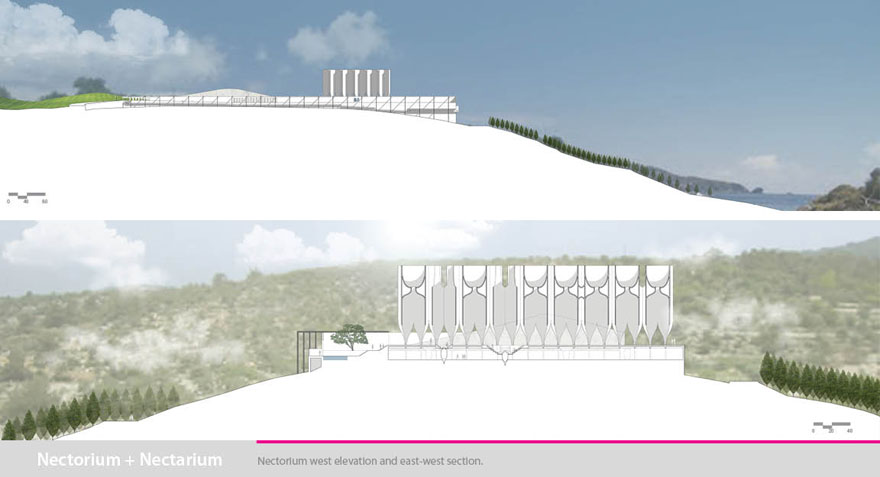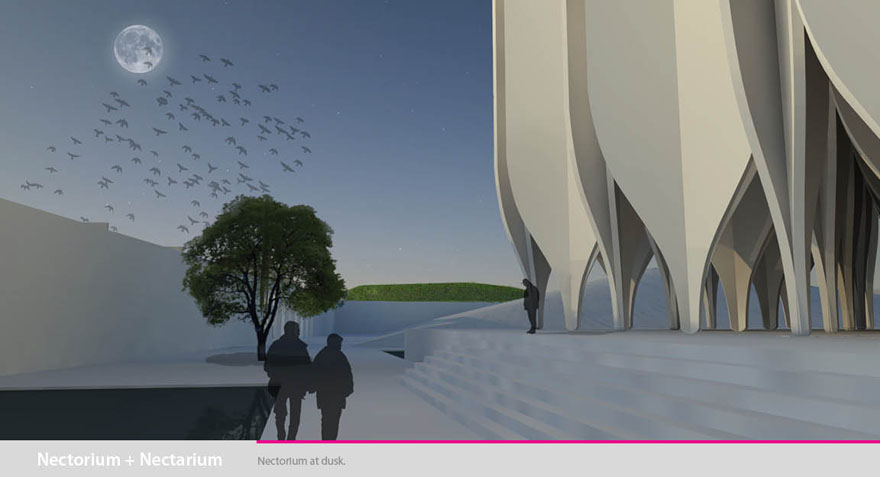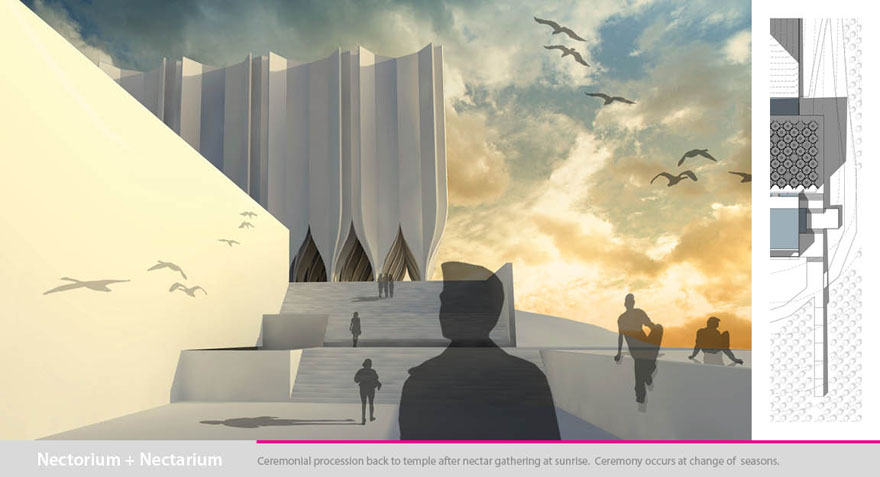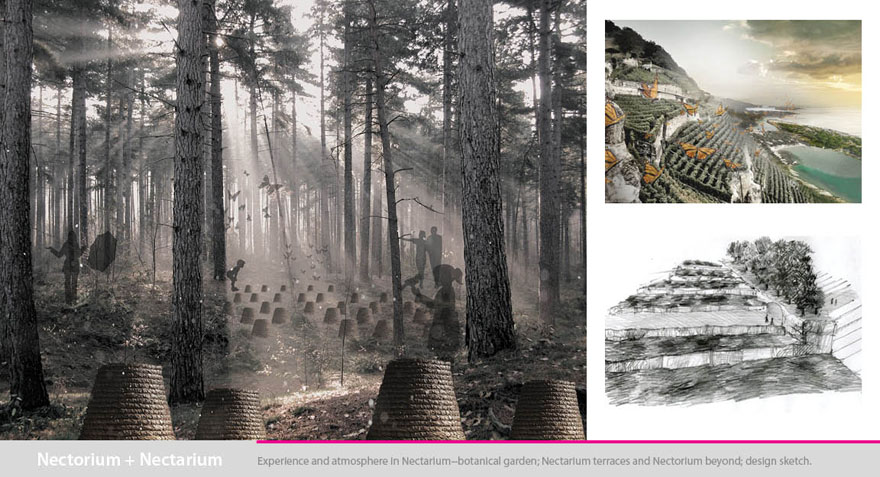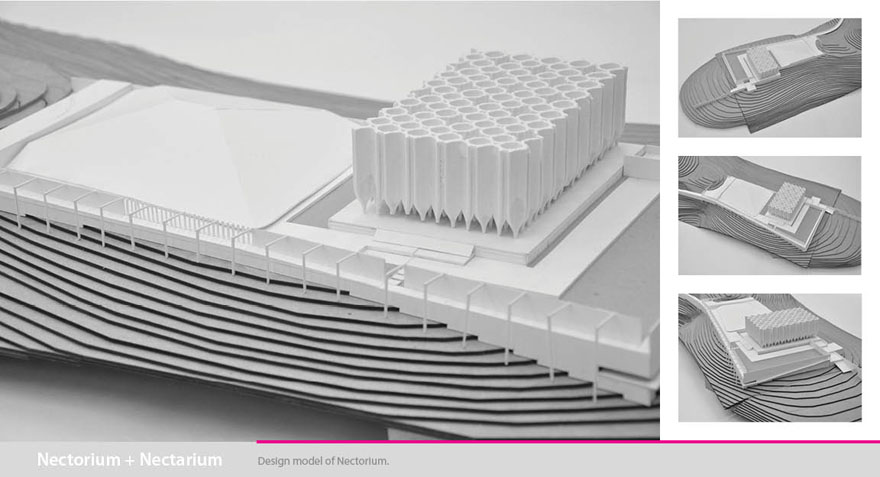Nectorium | Nectarium
- Work Creative Fields Architecture, Unbuilt
- Project Type Thesis/Design Studio
- Publication goo.gl
- Project Date Fall 2011
Technological and scientific advancements in the post War World II society and globalization have led to a dominant contemporary attitude that everything is attainable, everything has to be instantaneous, and everything can be acquired. We are brought up to believe that our needs and demands can be infinite, and we have rights not only to acquire our every whim, but also demand it in a snap of fingers. To ask us to wait, or to consume only for necessity, is almost unthinkable.
Under this premise, we propose a spiritual space for the 21st century to revolve around the idea of The Forbidden, articulated and experienced in the form of a conservatory with a botanical garden. The idea that something at the heart of the project needs to be sought and cannot be acquired will augment the visitors’ desire and awareness. The experience will inspire and awaken them to speculate on their lives of abundant desires and conquests, and reflect on their daily transgressions.
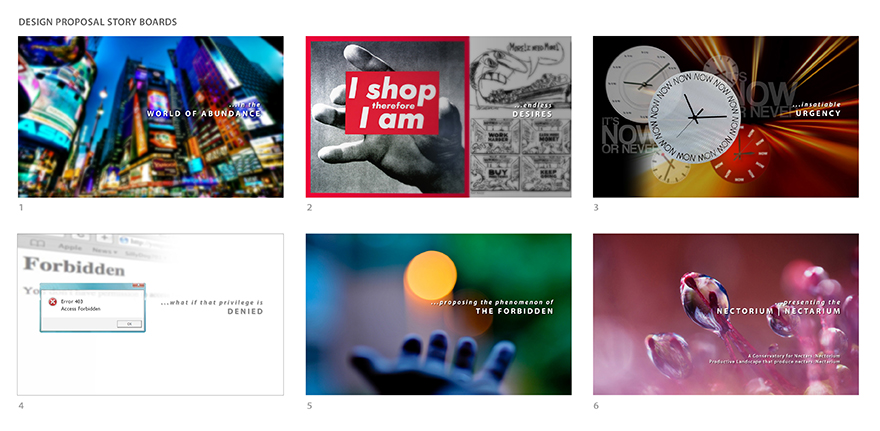
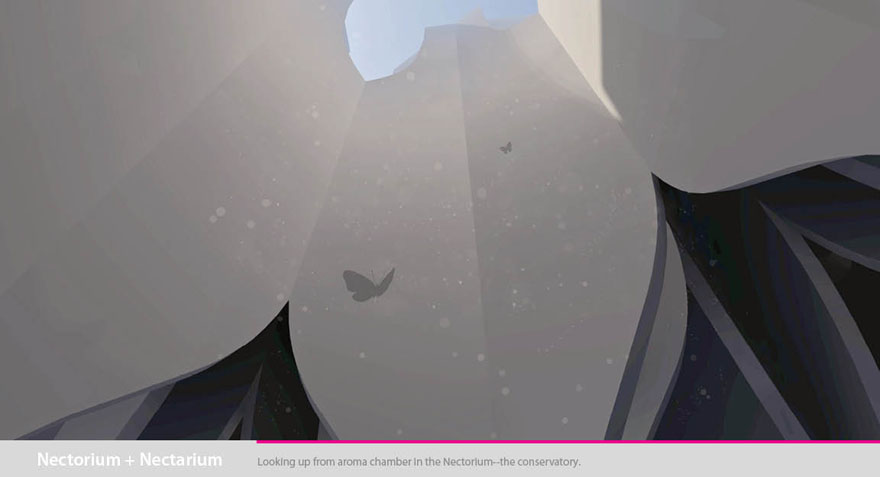
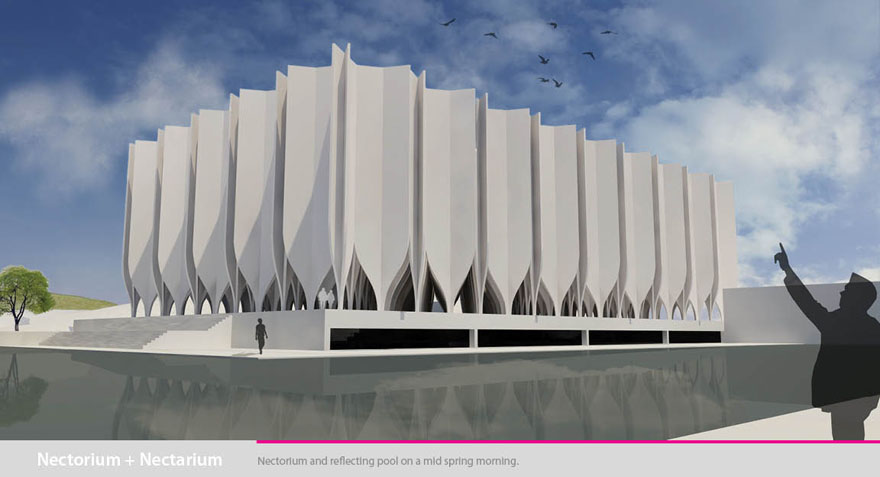
The project consists of a Nectorium and a Nectarium, hypothetically located on the southeast coast of the Greek island Thassos, across from an ancient white marble quarry. The Nectorium is a conservatory, a temple for safe-keeping The Forbidden, which is a collection of nectar from native flowering plants curated in the botanical garden, the Nectarium. Nectar is a sweet liquid secreted by flowering plants to attract pollinators. Humans consume a derivative of nectar processed by bees – honey. Nectar, the desired drink of the Olympian Gods, is forbidden to humans. Completely exploiting the nature of human curiosity and mythological fantasies, the temple and garden invite visitors to desire The Forbidden, to seek it, and to enjoy its aroma, but prohibit visitors from obtaining it.
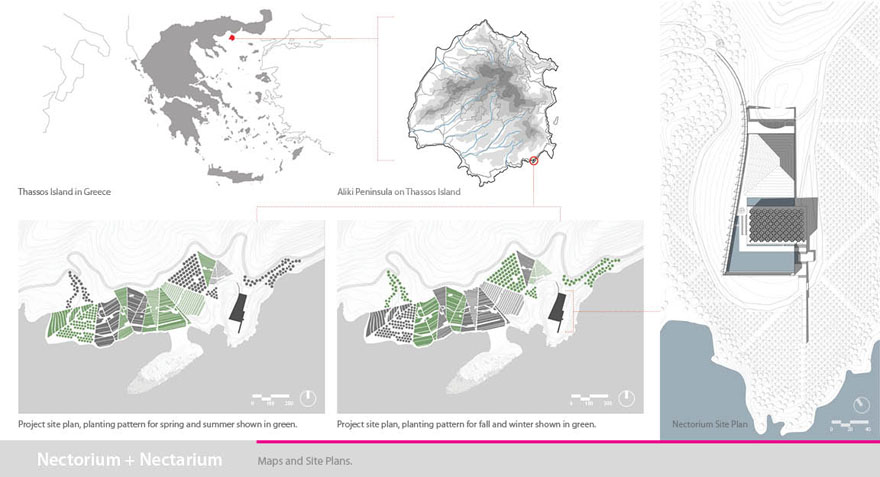
The white-marble Nectorium sits on the brow of a cleared white-marble hilltop in a walled compound, adjacent to the productive land of the Nectarium, terraced and cultivated with the precision and decisiveness exercised when mining a quarry. The temple takes the abstracted form of ancient Roman amphorae and how they were packed during transportation. Sixteen chimney-like ‘cells’ in the structure (sixteen plant species in the Nectarium), each creates a stack effect that draws up aromas from nectar stored in nectar-wells sunken into the temple’s podium. In the nectar-wells, visitors can sit and enjoy the aromas. The ‘closed-cells’ in the structure collect rainwater that fills a ‘stream’ carved into the podium (recalling the paths through the garden), and fills the reflecting pools below. The grand staircase on the south-east corner of the compound extends down the hilltop, and continues down a path to the ocean below. On few occasions throughout the year, a ceremonial procession will gather nectar and bring it back to the Nectorium by boats and parades up the hill to the glowing white temple. Next to the temple is a polished, articulated marble mount in place of the existing pinnacle, re-emphasizing this dipole relationship of garden and temple, nature and man-made object, landscape and architecture, and the growing ambiguity of the two.
